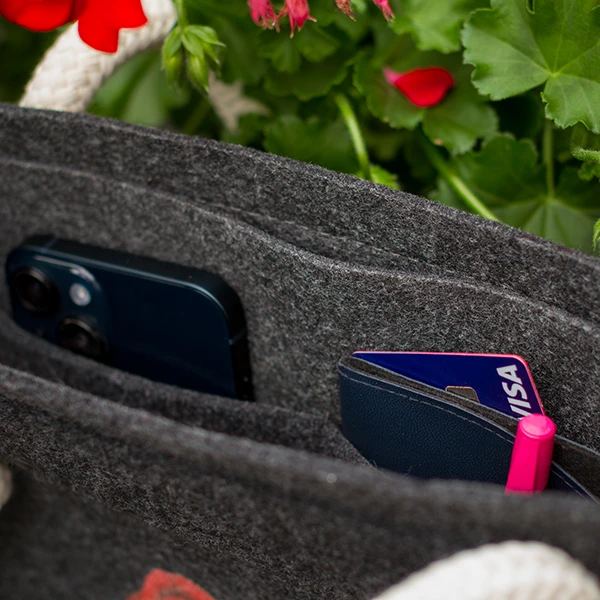Wildflowers — premium felt bag
- Durable felt bag with a plant motif for a gift for a plant lover, for shopping. Sewn in Poland. An original gift for a gardener, allotment holder.
Subscription products in your shopping cart
Set one delivery frequency for all subscription products in your cart every:
Subscription products in your shopping cart

We will prepare the bag especially for you after you place your order
Carefully made in Poland from high-quality felt, our felt bags combine durability with elegance. The spacious interior with detachable pockets will hold all your essential items, and the sturdy handles ensure comfortable carrying.
Original illustrations inspired by old herbariums, precisely printed, add a unique character. The botaniki felt bag is a stylish and practical wardrobe element for all nature lovers.
- Weight: 800 g/m2
- Felt thickness: 4 mm
- Dimensions: 33 cm x 10 cm x 36 cm
- Sturdy handles
- Detachable inner pockets
- Clear and colorful print
- Made in Poland
Wildflowers: daisy, common poppies, cornflowers
Leucanthemum vulgare, Papaver rhoeas, Centaurea cyanus L.
The name Leucanthemum comes from the words leukos - white and anthemon - flower and was given because of the color of the flowers. Daisy, on the other hand, is the common name for the goldenrod proper, also called hawkweed proper. Also the Latin name is not uniform. You can meet Leucanthemum vulgaris and Chrysanthemum leucanthemum. Regardless of what we call these beautiful flowers - they are undoubtedly a real ornament of fields and meadows. The golden baskets surrounded by a garland of snow-white petals are actually composed of steaks of tiny, tubular yellow flowers. The daisy is one of the largest wildflowers in Poland.
Common poppies are an extremely common species, but you can never completely saturate your eyes with their sight. The red heads of Papaver rhoeas appear every year in the meadows, and their petals, smooth as silk, easily yield to the lightest breezes. Poppies, though beautiful and ephemeral by nature, are a nuisance to farmers. Seeds, extremely vigorous have a germination capacity of about 30-40 years, as a persistent weed they are a threat to the grain crop.
Another inhabitant of the field meadow is cornflowers, a flower that has many different folk names, such as macchia, samosa or modrak. Although it is a common weed in Poland, its modish crown of tiny flowers adorns the meadow like blue jewels glittering in the sun. The cornflower, which blooms from May to September, is pollinated by butterflies, among others, and its fruits are dispersed by the wind and ants. Sometimes its seeds can go astray among fields and fallow land, and then, spreading along with the crops, cornflowers pierce the golden ears of wheat or rye with their flower baskets, or shine intensely among the wasteland like blue stars.















